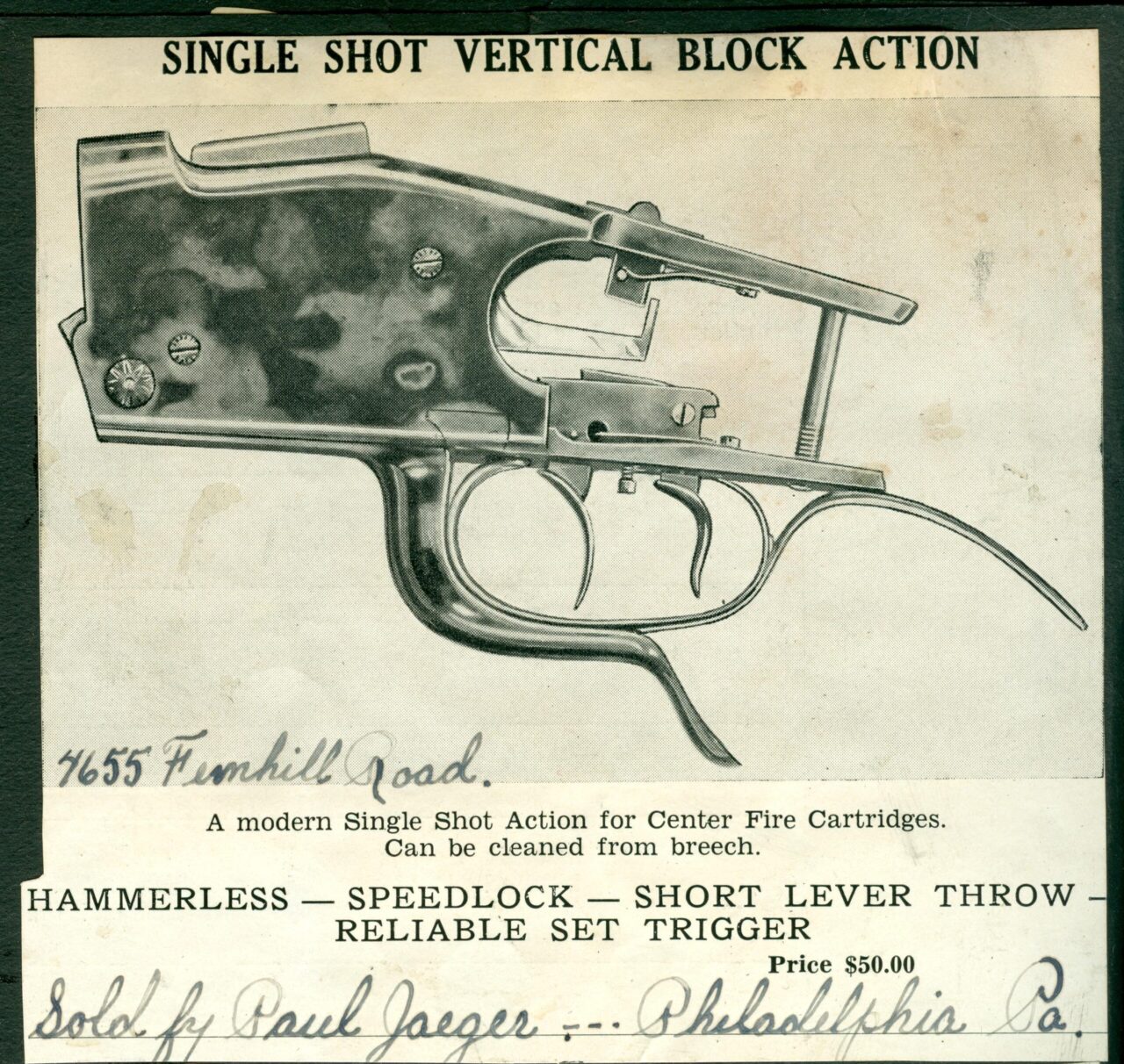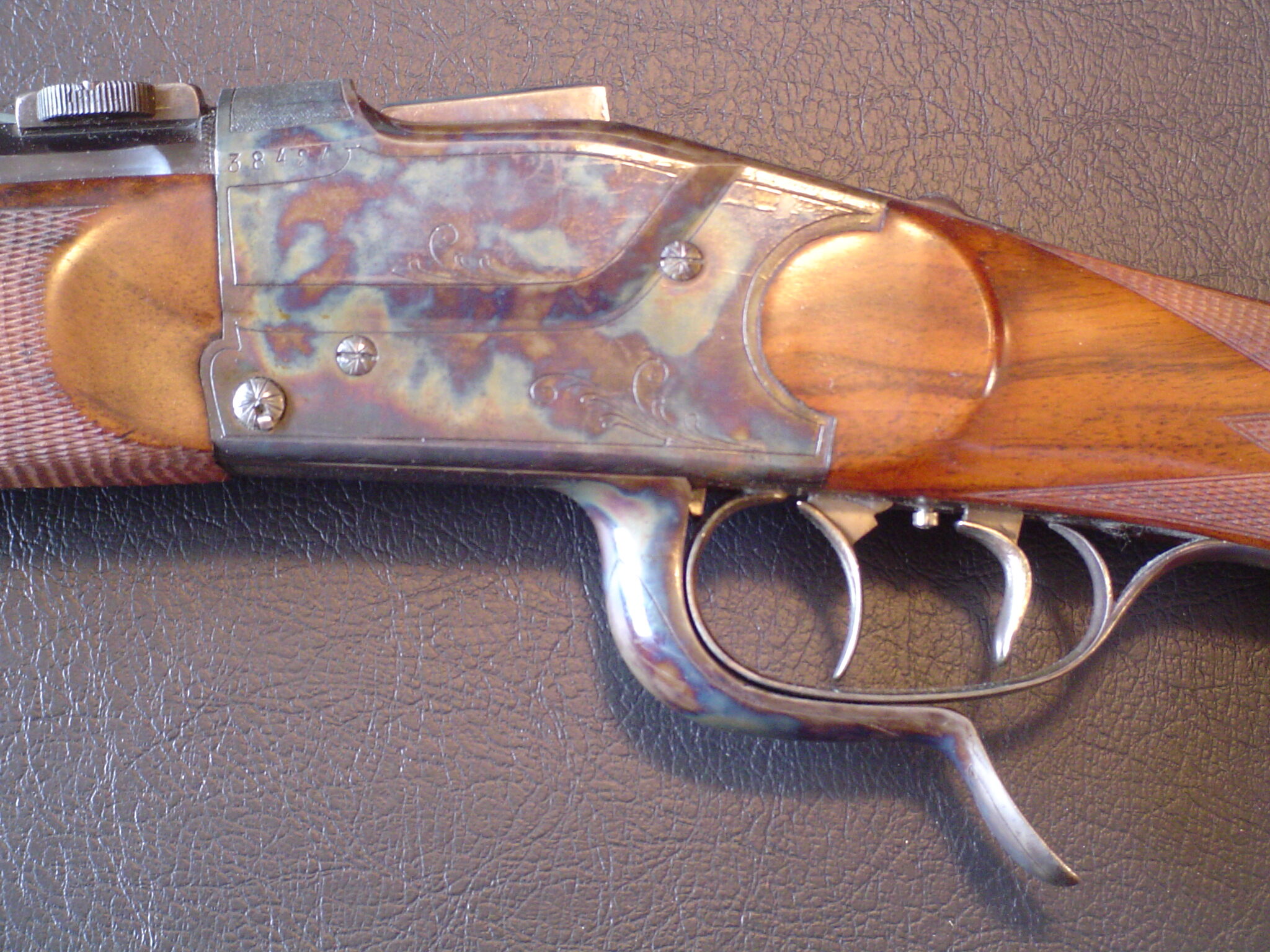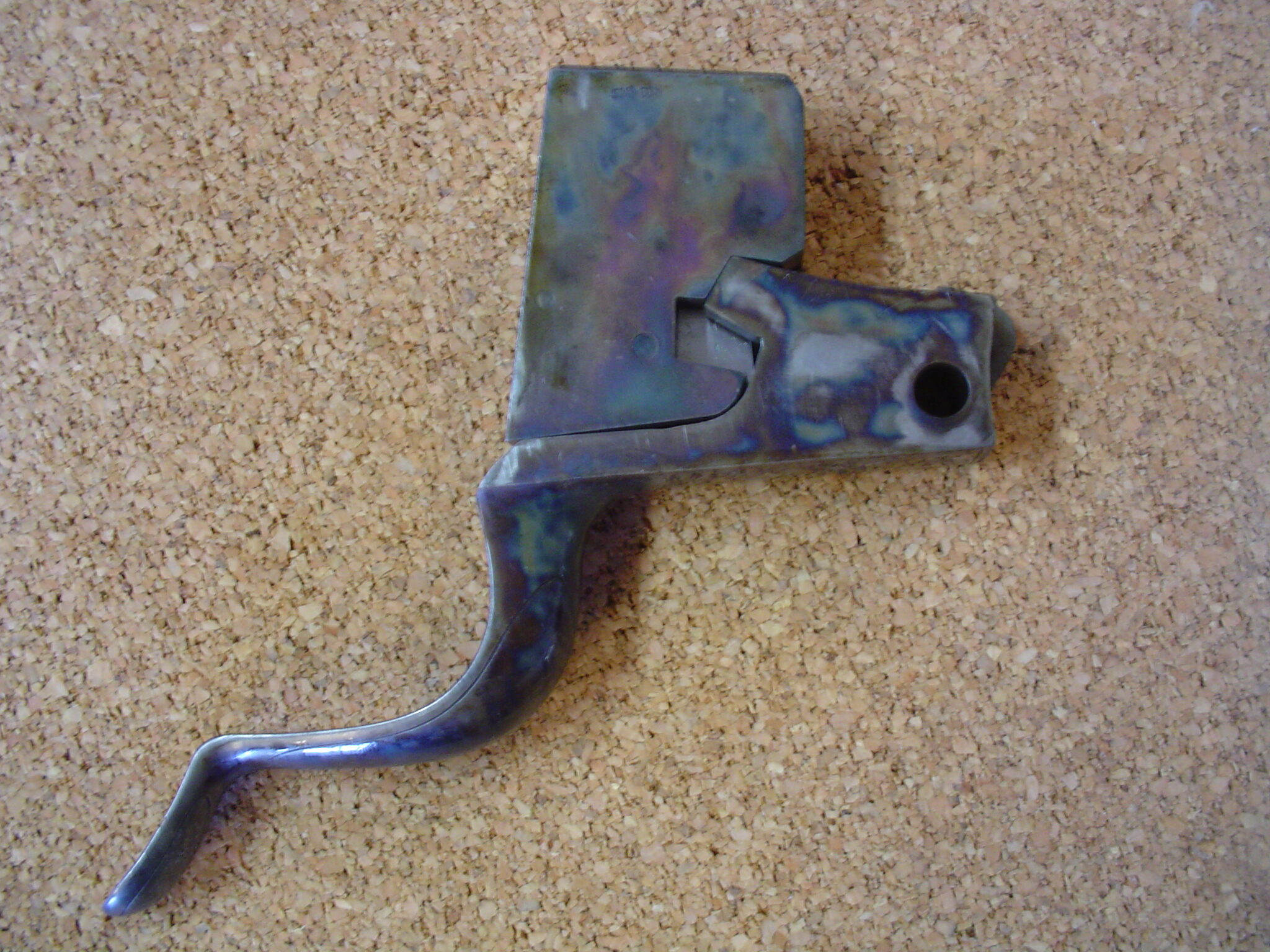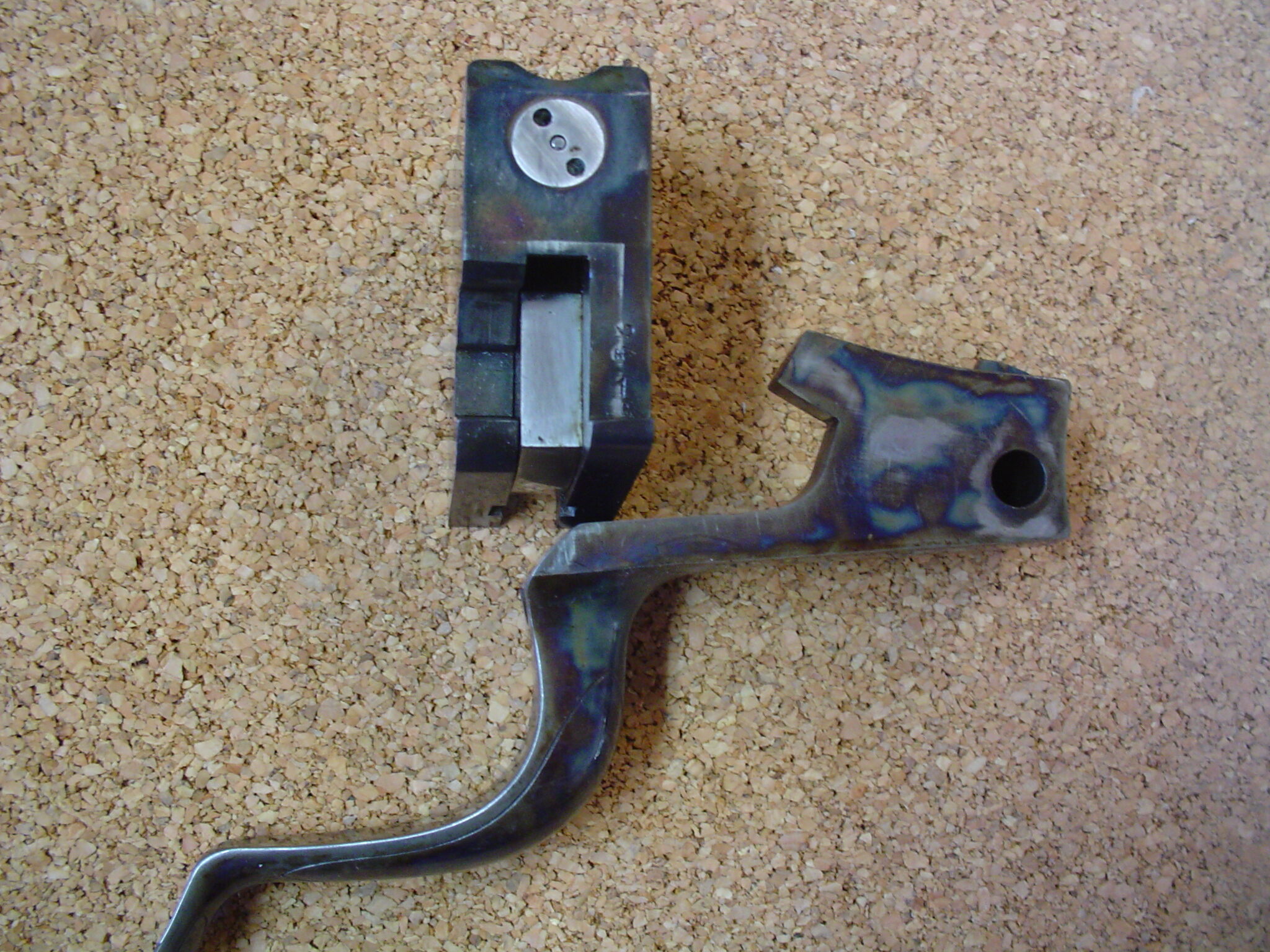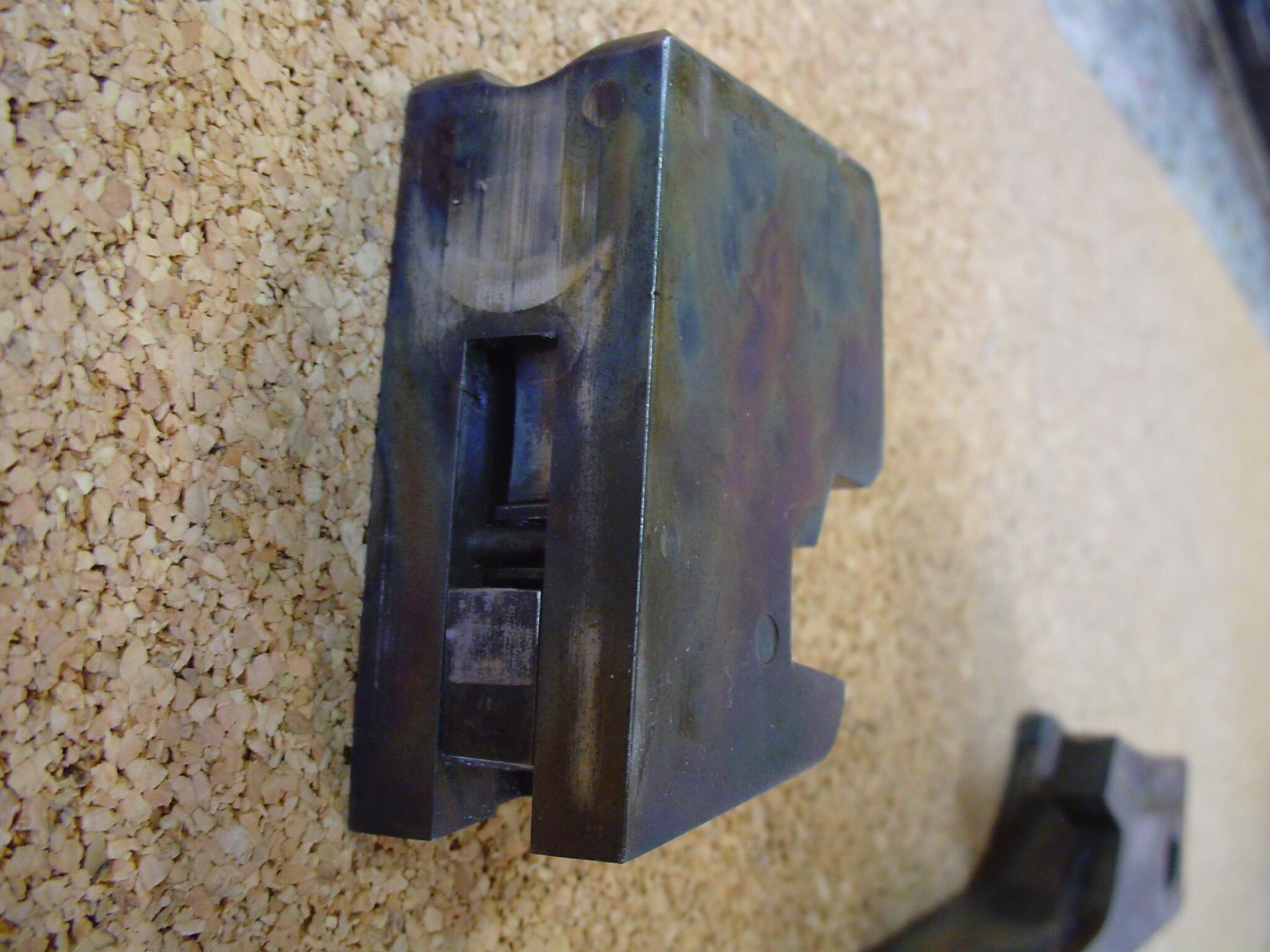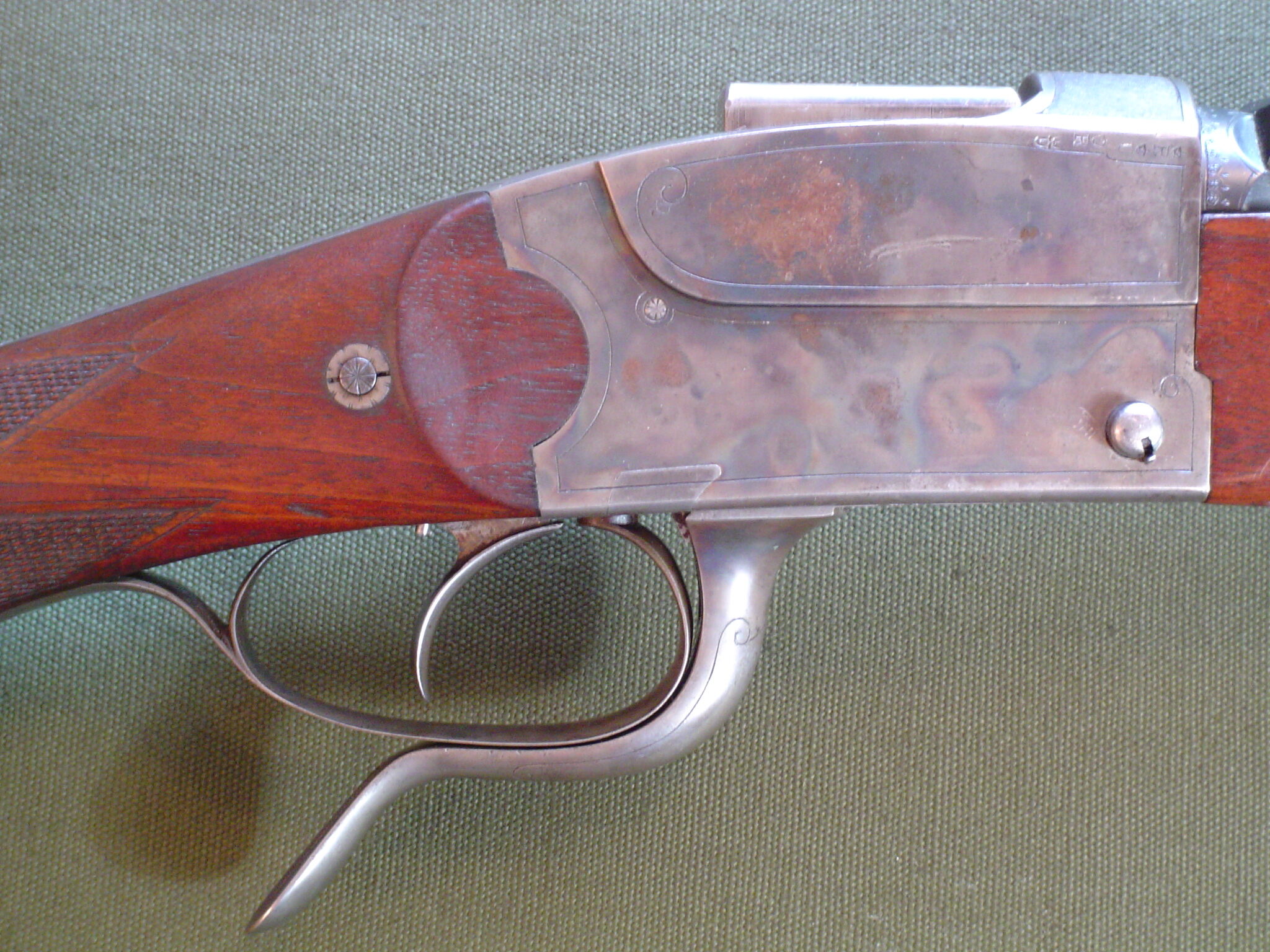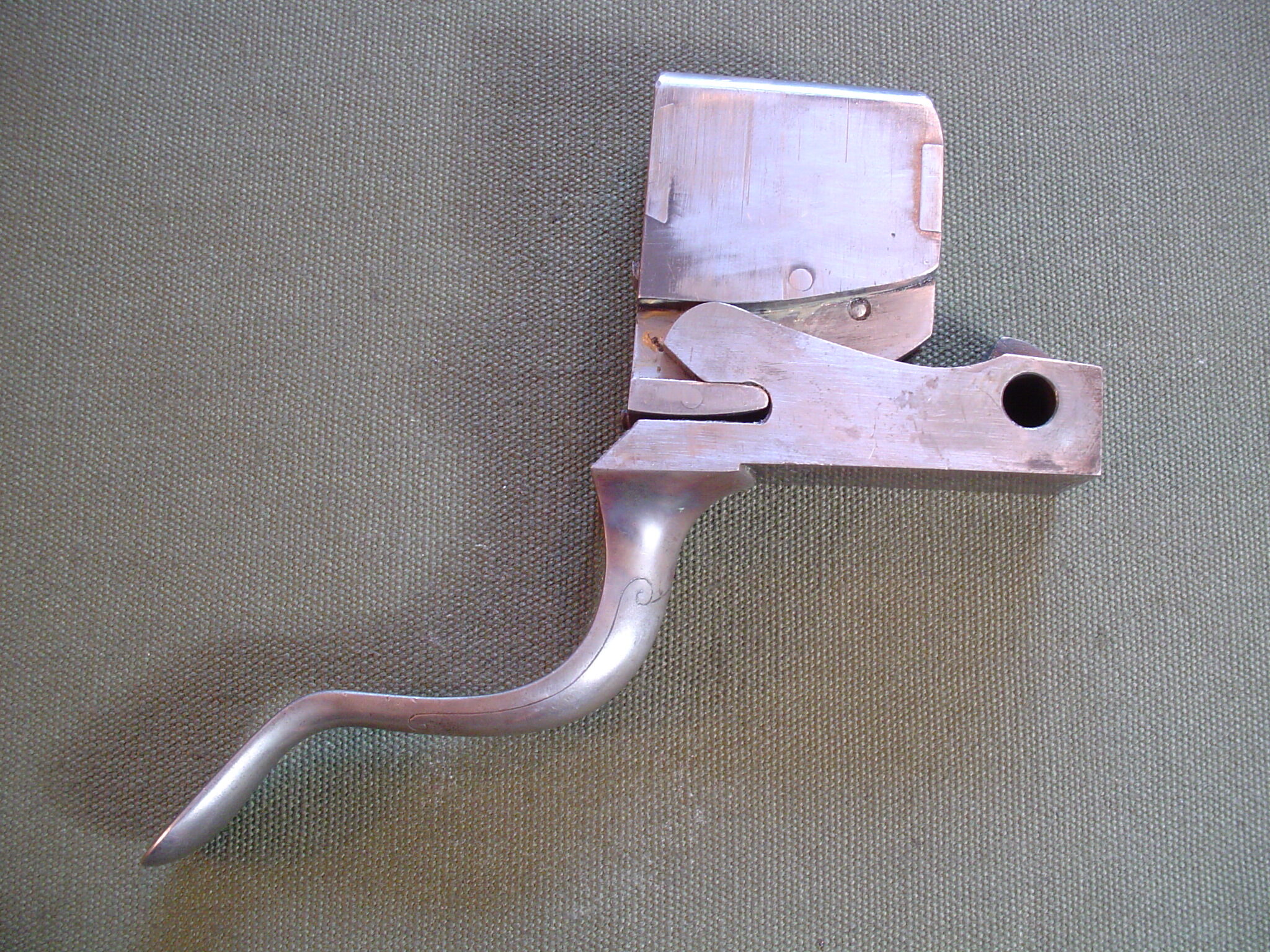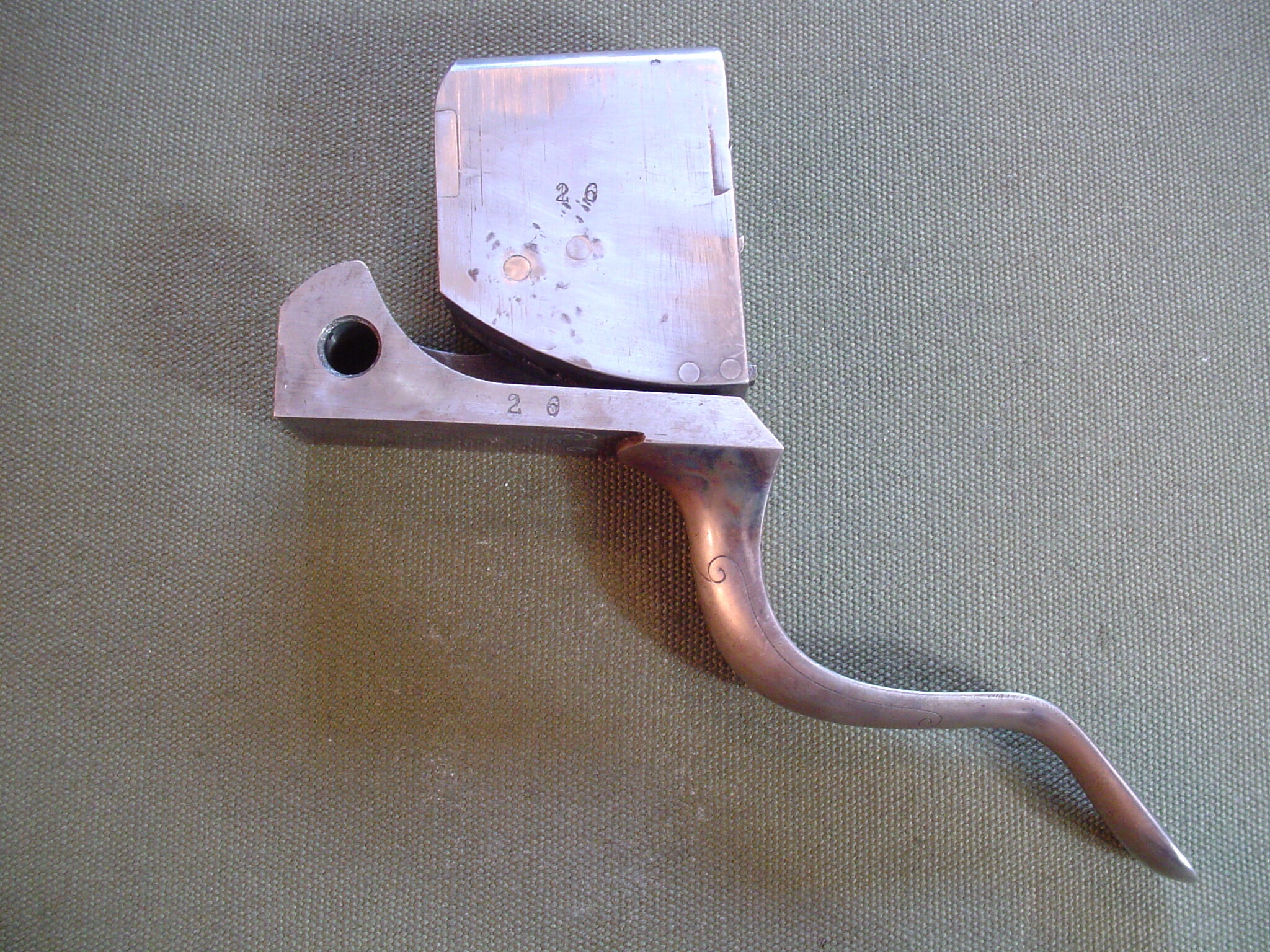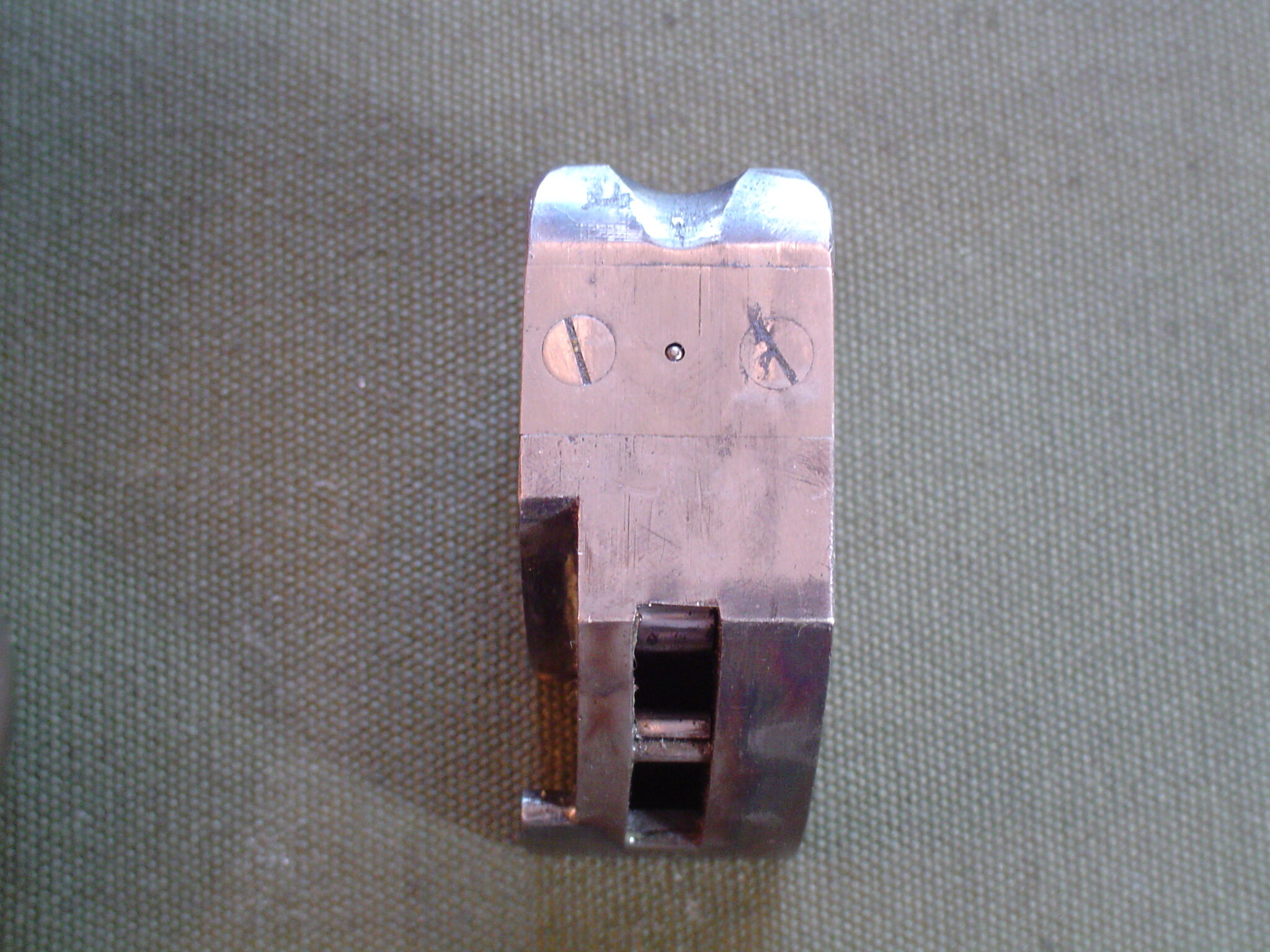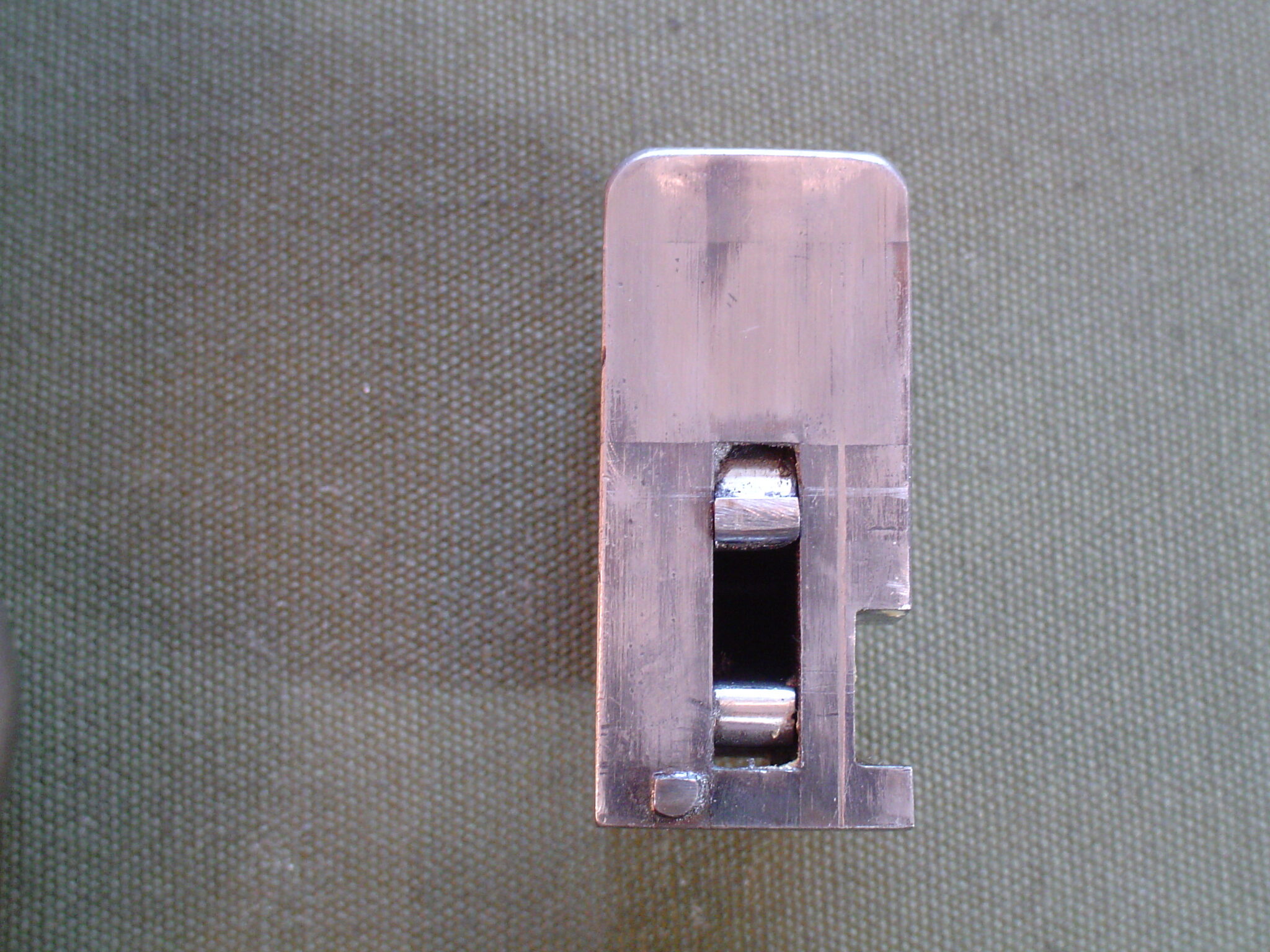By Larry B. Schuknecht
The following information is gleaned from the following sources-
The Directory of Makers & Tradesmen compiled by Jesse Thompson and found in the book- Alt Scheibenwaffen Vol. 2. (Courtesy of Mr. Tom Rowe)
The private archive of Pape & Kellner
Hilmar (January 13, 1881-Dec. 5, 1953) was the son of an independent Zella St. Blasii Meister Engraver and the maternal grandson of the Büchsenmachermeister Georg Hengelhaupt. He apprenticed to the Büchsenmachermeister Fritz Marr for three years (1895-1898) and worked for Marr an additional two years before starting his Wandershaft. Then he spent two years working in various places at various occupations, one of which was at a Tower Clock factory in Recklinghausen. The knowledge and experience gained in these two years were valuable to him.
Upon returning to Zella St. Blasii, Hilmar gained employment at the firm of Engelhard Barthelmes, while at the same time began to build and in his spare time began to build and organize his own shop behind his father’s home at Wiessenstrasse 8. On Nov. 2, 1906, Hilmar was was accepted as a Meister by the local Gunmakers Guild and on that day he became an independent entrepreneur. Hilmar and his father both worked in the business and with hard work it became successful and eventually would employ as many as eight journeymen.
On Aug, 24, 1908 Hilmar was granted the DRGM no. 351857 for a Verticalblockverschluss (vertical falling block action) für Gewehre. We don’t know for sure but we believe that this D.R.G.M. covers a lever with a square finger that locks the breech block closed when the lever finger mates into a square recess in the breech block. This will be shown later.

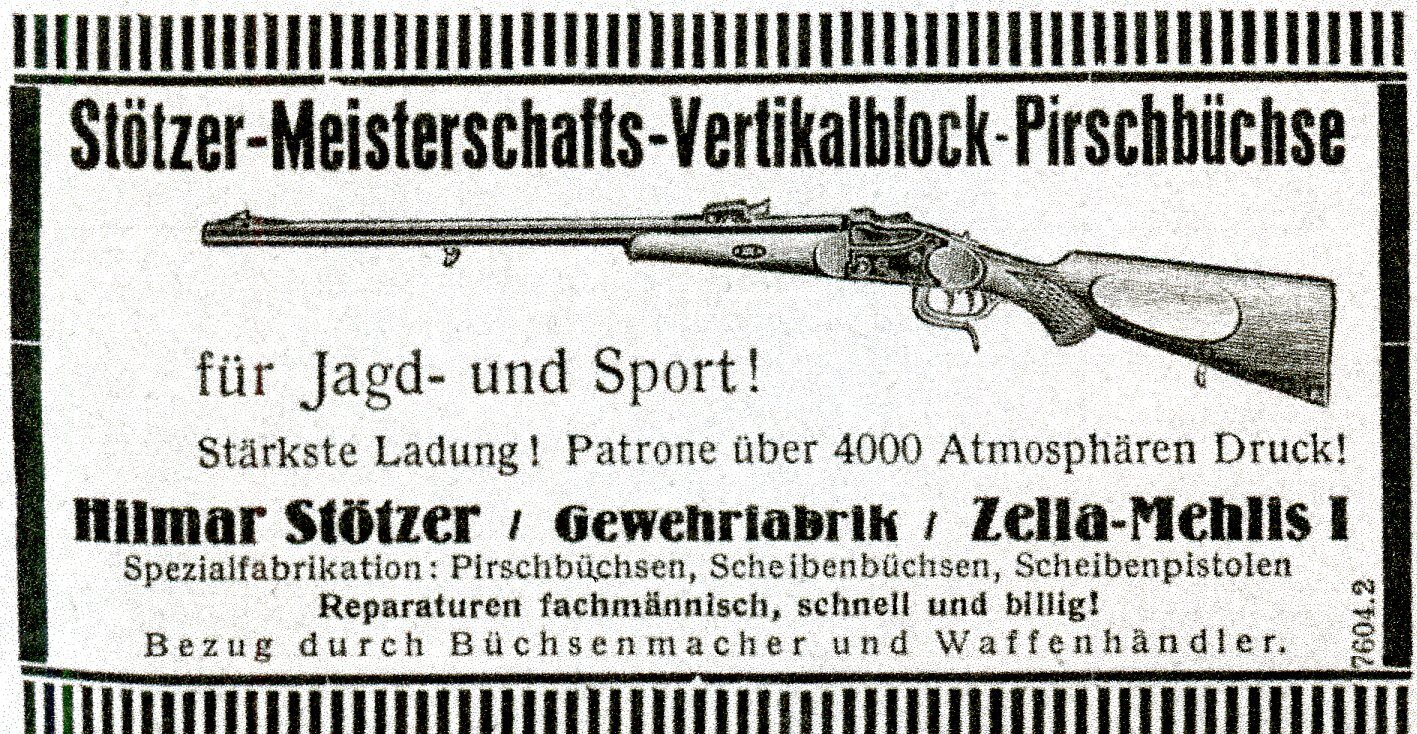
On Feb. 22, 1912 Hilmar was granted DRGM no. 500824 for Schieben-Pistole mit Winkelblockverschluss (the design of a small bore target pistol with an angle-block lockup). This pistol famously known as the Perfekt became well known after World war I. In 1922 the AKah of that year featured this pistol with the marking-Stötzer Tell Pistole D.R.G.M. and Gerhard Bock in his 1922 book Moderne Faustfeuerwaffen included it.
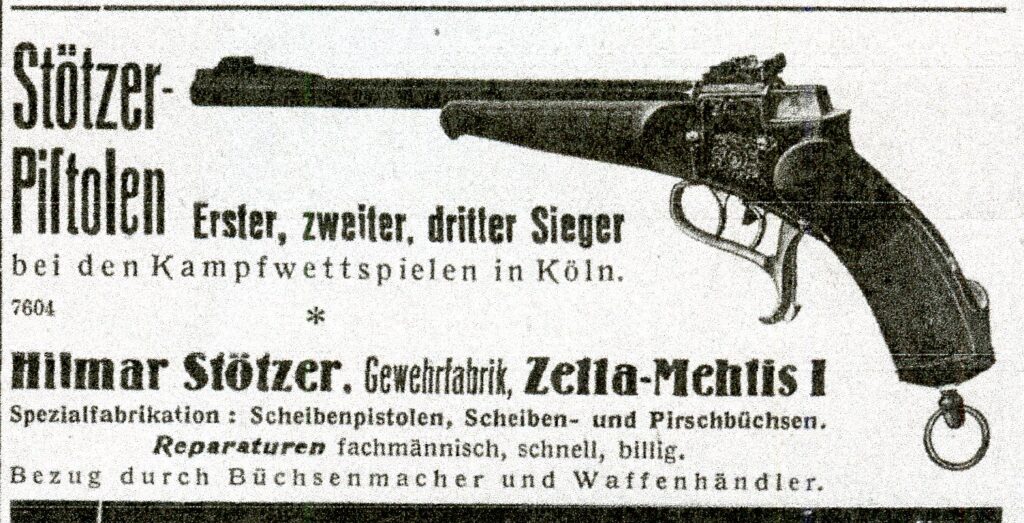
Following is a 1929 Invoice from Hilmar Stötzer to W. Glaser of Zürich for three Target pistols. The copy of this was found in Dietrich Apel’s archive and is courtesy of Mr. Bob Simson.
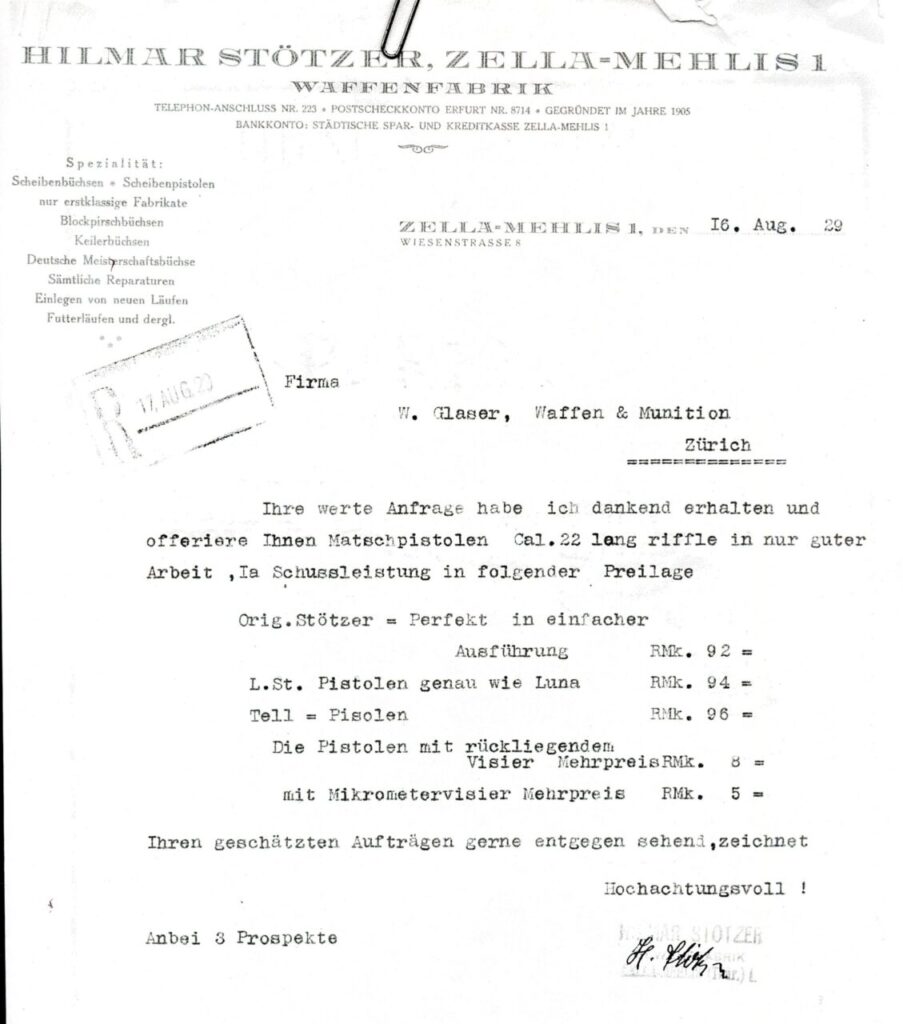
After the end of World War I the German economy went into a recession with money becoming highly inflated to a point that a bushel basket of Notegeld’s would be needed to buy a loaf of bread. The Stötzer firm continued on through all of this making and selling a general line of sporting and target guns as well as their proprietary guns using the Ideal and Perfekt actions. They almost certainly also supplied bare actions to other makers upon which they built guns using their name.
Hilmar enjoyed hunting and target shooting and was very proficient in the later. Just before World War I he was a rising star in the Deutschen Pistolenschützenbund and in the 1913 shoot-off at the 35 m, 15 ring target placed second with a score of 371 out of 450 with E. Müncheberg of Berlin scoring 373. Over the years Hilmar many cups and medals. Some of his more notable achievements were:
Pistol champion at the 1926 Deutschen Kampfsiele.
Champion at the 16th Deutschen Pistolmeisterschaftschiessen at Chemnitz in 1928.
Pistol Champion at the International Schiessportaustellung at Berlin in 1929.
Pistol Champion at the Grünen Woche at Berlin in 1929 and many others. His outstanding ability led to his nomination to the German Pistol team for the 1936 Olympic Games but he deferred and stood aside to the younger shooters.
In his later years Hilmar enjoyed hunting in his spare time. His business survived World War II only to be taken over by the Government a few years after the end of the War.
Hilmar’s son Franz (born May 11, 1910) followed in his father’s foot steps, and became a Buschsenmachermeister on March 13, 1937. From 1935 to 1939 Franz and Hilmar both worked at producing their fine Sporting and Target guns. After 1939 the firm at Wiesenstrasse 8 concentrated on making precision metal parts.
Hilmar Stötzer & the Ideal Rifle Actions
Hilmar is recognized as the maker of the Ideal actions, but not all Ideal actions were made by him. The Ideal actions usually attributed to him are simple falling block, under lever hammerless actions which were based on the Richard Bornmüller Vertikalblock action. Initially the actions had plain, flat sides but after about 1920 they were made both plain or with a re enforcing bolster on each of the panel sides. There is no linkage between the breech block and the lever, they mate together to form a simple lock up with the lever finger locking into a notch on the breech block to lock the breech block in the closed position which is believed to be the feature of the action protected by the D.R.G.M. The breech blocks come in both a short and long versions. The protection Hilmar had with his D.R.G.M. of 1908 was rather short lived (three years with an option to renew for another 3 years). The Hilmar Stötzer actions can be identified by a step or projection on the lower front of the action.
Ernst Friedrich Büchel of Zella-Mehlis made a single shot action he called the Ideal which may be based on his Original system. It has some similarities to the Stötzer system, but also differences such as the mainspring is mounted under the hammer in a horizontal position whereas the Stötzer action has the mainspring behind the hammer in a vertical position. They both use a Hammer sear mounted behind and not connected to the breech block and the lever engages the breech block differently. The breech block lowers a short distance, then rotates back away from the breech like a Remington Rolling Block.
Oscar Will of Zella-Mehlis also made a rifle called the Ideal System or action that is quite different from the Stötzer.
Following is a slider of images of a rifle with a Stötzer Ideal short block, reenforced action with a Griefelt trade mark.
Following is a slider of images of another Ideal rifle with a long block re enforced action with a trade mark of Christian F. Triebel. Again made on a Stötzer action.
Below is an image of three rifles using Stötzer actions, they are-
Top-L. Schiwy-Berlin in 6.5x52R proofed in 1927
Middle- Alfred Plete-Frankfurt A/M
Bottom- Greifelt-Suhl in 8.15 x 46R sold by Georg Lechner-Nürnberg, proofed in 1939.
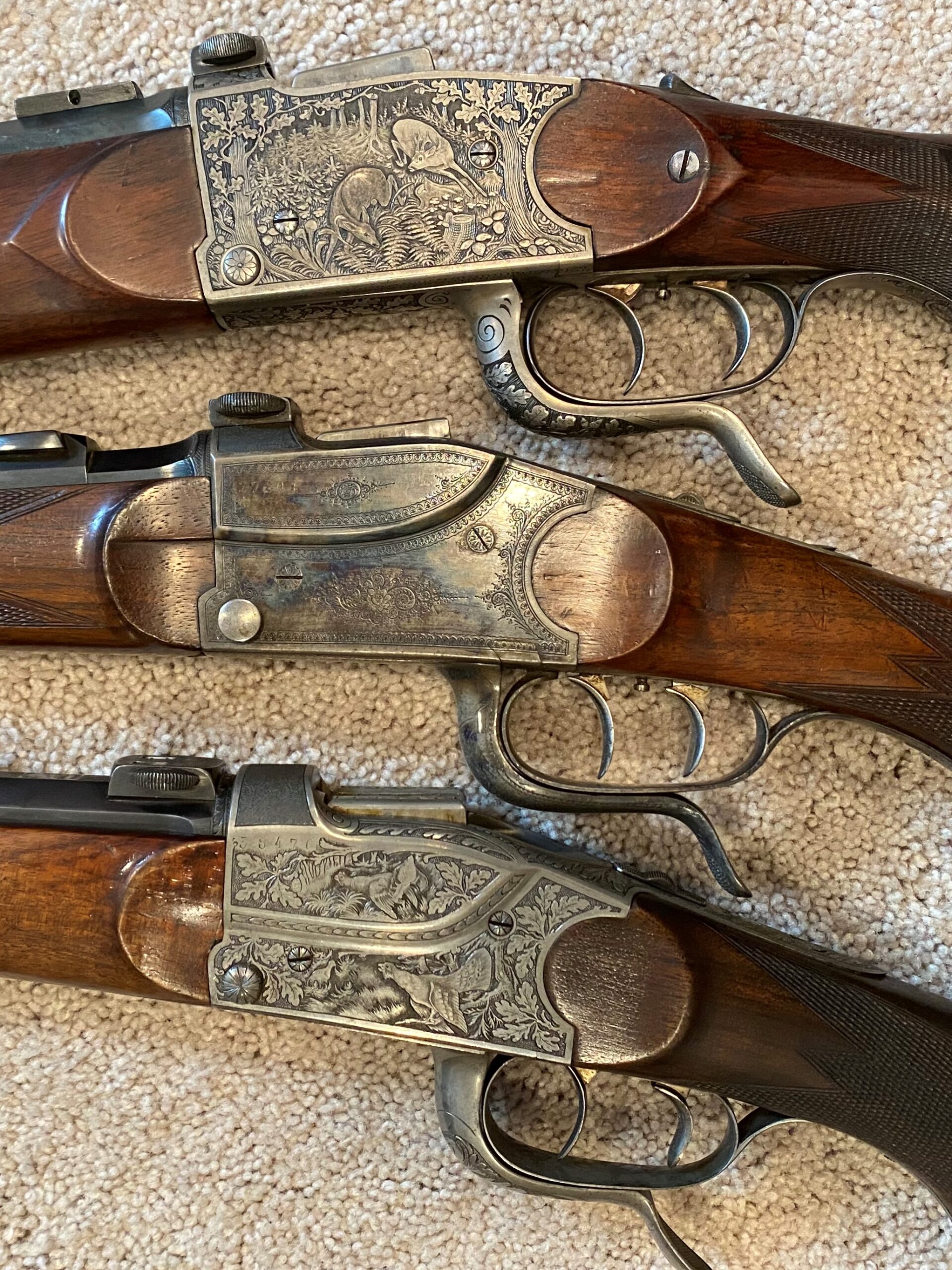
Below- an advertisement from Paul Jaeger for the Stötzer action which he offered to the American gun builders and shooters, probably in late 1936 or 1937.
